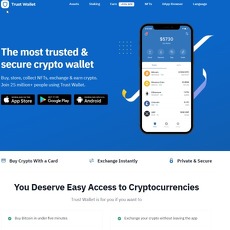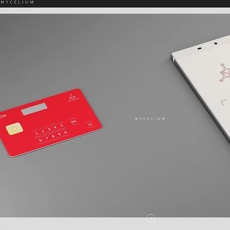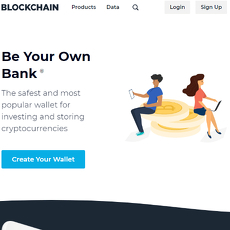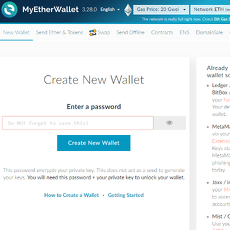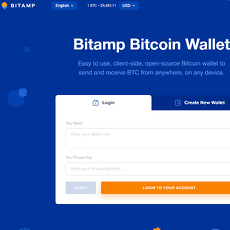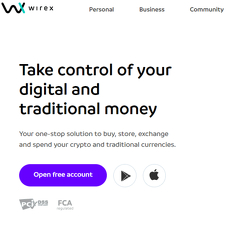Copay Bitcoin Wallet Review
Copay Bitcoin Wallet
copay.io
Copay Bitcoin Wallet Review Guide: Everything You Need to Know + FAQ
Ever wondered if your Bitcoin wallet is truly safe—or if you’re just hoping for the best? Let’s face it, with all the news about hacks, scams, and shady apps in the crypto world, sending your coins into the unknown can feel like gambling with your hard-earned savings. If you’ve ever asked yourself which Bitcoin wallet strikes the right balance between bulletproof security and pure simplicity, you’re not alone. I bet you want a way to send and receive crypto without a steep learning curve or scary surprises. Good news—the Copay wallet might just be what you’ve been searching for, and I’m here to break it all down.
Why Picking the Right Wallet Really Matters
Here’s the real deal: picking just any old crypto wallet can lead to headaches—or much worse. It’s not just the fear of scams (which, let’s be honest, is real); it’s the constant uncertainty. Will my coins disappear? Did I just get tricked by a snazzy logo and empty promises? I recently came across a Chainalysis report that shows losses to wallet phishing attacks keep hitting new highs every year. That’s enough to give anyone pause.
And then there’s the complexity factor. Some wallets act like you need a PhD in blockchain before you even see your balance. Others cut so many corners in the name of “user friendliness” that you lose key safety features. It’s overwhelming.
- Maybe you’re afraid of losing your backup phrase.
- Maybe you don’t have time for endless set-up steps.
- Or maybe the idea of trusting your crypto to a faceless app you downloaded on a whim makes your palms sweat.
Sound familiar?
I’ll Walk You Through a Simple Solution
If you’re itching for a wallet that doesn’t turn things into rocket science—while still taking care of your security worries—you’re in the right place. Whether you’re stacking sats for the future or just sending a few coins to friends, you want real, usable answers, not tech jargon that just confuses you more.
I’ll keep things clear and straight to the point. We’ll go step by step through what Copay actually is, how you can use it today, and why it keeps coming up in crypto conversations. Forget the marketing fluff—you’re going to get the facts that matter.
What to Expect in This Review
So what am I really going to cover for you?
- What the heck Copay actually does, and why it might make your crypto life easier
- How (and how quickly) you can get started with the app—even if you’ve never touched Bitcoin before
- The safety questions everyone asks (no, really, I hear these every single week!)
- Exactly how Copay is different (and possibly better) than other wallets out there—like BitPay
- Some personal notes on where Copay hits it out of the park, and where it falls short
If you’re tired of Bitcoin wallets that promise the moon and give you headaches instead, stick with me—because the next part will break down what Copay actually is and why it might just become your new go-to. Ready to actually know what you’re getting into? Let’s pull back the curtain on Copay in the next section!
What Is Copay Bitcoin Wallet, Anyway?
Let’s face it—plenty of crypto wallets promise the moon and rarely deliver anything except headaches. Copay does things differently. Right off the bat: it’s totally free and open-source. No strings. No hidden fees. No strange logins. It was built by BitPay, but don’t confuse it for a banking platform. Copay is about one thing: letting you control your Bitcoin (BTC) and Bitcoin Cash (BCH) without fuss.
"Simplicity is the ultimate sophistication." – Leonardo da Vinci
Simple, Clean, and Multisig
Here’s where Copay really pulls ahead for regular folks and teams: multisig wallets. Let’s say you and a couple of friends run a poker night, or maybe you handle group travel funds for your small startup. With Copay, you create a wallet that requires everyone’s go-ahead before sending out any satoshis. This feature—a “multi-signature” or multisig wallet—is your backup against mistakes or one person running off with the loot. It’s the kind of teamwork tool you usually only find in major business wallets—and it’s 100% free here.
Bitcoin and Bitcoin Cash in One Place
Why juggle extra apps? Copay keeps it simple by letting you manage both Bitcoin and Bitcoin Cash in the same wallet. No switching windows, no scanning credentials across two apps. Need to send BTC to your hardware wallet and hold BCH for your favorite merchant? Just a few taps and you’re done.
Cross-Platform — Use It Everywhere
If you check your crypto balances during your morning coffee, during work, or even in bed (no judgment—I do it too), you’ll love Copay’s flexibility:
- Windows, Mac, and Linux desktops
- iOS for iPhone/iPad users
- Android for everyone else
This means you’re not stuck with a single device. Lose your old phone? Just restore your wallet with the recovery phrase on your new device and you’re back in the game.
Who Should Use Copay?
Copay feels tailor-made for a certain kind of user:
- Small teams & friends who need shared wallet access
- Solo users who value full coin control
- Bitcoiners tired of clunky, bloated wallets
- Anyone who craves security but hates “overly technical” apps
Imagine you’re a freelancer getting paid in crypto—Copay lets you invoice in BTC or BCH and track all your coins, without needing a finance degree to set it up.
Here’s an interesting thing: a 2018 academic paper on wallet usability found that users overwhelmingly favored wallets with fewer screens and basic, easy navigation. Copay nails this, stripping away complicated settings in favor of straightforward, “click-and-go” functionality. If you’ve ever felt lost in endless setup menus, Copay’s simple design is the breath of fresh air you’ll notice right away.
Ever wondered what setup actually looks like? Coming up, I’ve got the step-by-step lowdown—so you’ll know what to expect before you even hit “download.” Curious how to get started in minutes, or wondering if there’s a catch with the setup process? Let’s peel back the curtain next…
How to Set Up and Use Copay: Step-By-Step
Let’s get straight to it—setting up Copay is honestly one of those “why didn’t all wallets do this?” experiences. If you’ve ever been intimidated by a crypto wallet before, you’ll probably let out a sigh of relief here.
Download and Install
You don’t need a computer science degree for this part. Head over to Copay.io if you’re a desktop fan, or hit your regular app store if you’re the mobile type. No sketchy download links. No hoops to jump through.
Create Your Wallet
After installation, you’re prompted to create a new wallet. This is where Copay sets itself apart. The app doesn’t just throw you into the deep end—it generates a seed phrase (usually 12 words) that is your lifeboat if your phone ever takes an unexpected dip in the bathtub (let’s be real, who hasn’t?).
“Not your keys, not your coins.” Anyone in crypto for more than five minutes has heard that. Copay makes sure you have those keys, and puts YOU in control.
Pro tip: Don’t screenshot your seed phrase or email it to yourself. Write it down and stash it somewhere only you know. Seriously—it’s the only way back in if disaster strikes.
Add Funds: Get Your Address
Ready to receive some Bitcoin or Bitcoin Cash? Copay gives you a fresh address (and a QR code!) at the tap of a button. Share your address with friends, your side hustle clients, or even just transfer from another wallet—it all works the same way.
- Receiving: Share your address or QR code from the app.
- Sending: Just like texting, except you’re moving crypto! Scan a QR or paste an address, type in the amount, and hit send.
If you’ve been around the block, you know some wallets make this step needlessly complicated with hidden menus or weird jargon. Copay keeps it simple. No tiny font, no guessing games.
Send and Receive Crypto
Once your wallet’s loaded, sending funds is designed for the non-techie crowd. Scan or paste a recipient’s address, double check (always do this!), and hit send. Everything else happens under the hood.
One interesting bit: Some studies on usability (like the SOUPS 2020 paper) show that many crypto wallets lose users at this point because of convoluted send/receive processes. Copay seems to have read those papers, because you’re unlikely to get stuck here.
Bonus: Multisig Setup
If you’re keeping funds together with a team, Copay lets you set up a multi-signature wallet. Imagine this: three housemates using one wallet for rent, but transactions only go through if at least two approve. That’s the power of multisig—no surprise withdrawals, and everyone stays in the loop.
- Invite others to co-own a wallet (perfect for clubs, businesses, or families)
- Set how many signatures are needed for a transaction (e.g., 2 of 3)
- Boost security, cut down on mistakes
It’s not just about security—it’s about trusting the process when money is moving. No more “who paid what?” anxiety.
Getting curious if BitPay lets you do it all in one app, or if you really need a wallet-only focus? The next section is where things start to get interesting—wait until you see how Copay and BitPay truly stack up.
Copay vs. BitPay: What’s the Difference?
You’ve probably heard people talk about Copay and BitPay like they’re two names for the same thing. It’s not hard to see why—BitPay actually built Copay, and the apps share a lot of DNA. But the experience you’re signing up for is a whole different story. It’s like mistaking a laser-focused savings account for a full-on bank suite with bells and whistles, cashback, and gift cards. Let’s clear up the confusion.
BitPay: All-in-One Payments
Imagine a wallet that comes with its own built-in shopping mall. That’s BitPay. You can:
- Buy crypto right in the app
- Sell your coins for cash
- Swap between currencies
- Load up a prepaid card to use anywhere that takes Mastercard
- Even pay bills and shop directly with crypto
If you’re the kind of person who wants an all-access pass to spend, trade, and move money every which way, BitPay is the one-stop shop. According to a 2023 Statista report, apps that mix wallet and payment features see a nearly 40% increase in weekly user engagement compared to wallets that stick to basics. That’s something to think about if you live your life in the fast lane.
Copay: Pure Wallet Focus
Now, Copay flips the script. It’s that classic “less is more” approach. No built-in market. No prepaid cards. No way to suddenly get sidetracked buying meme coins or signing up for bonus offers. Copay is about one thing: keeping your Bitcoin or Bitcoin Cash safe and simple to access.
I know people who want the “no distractions” feel—a wallet that just protects their stash. There’s something almost calming about opening an app and only seeing what you need—your coins and your key controls. Research from The Nielsen Norman Group points out that simple designs help build user trust. Fewer options means fewer mistakes, especially for new users who just want to store and send.
Why Pick Copay Over BitPay?
If you’re the kind of person who doesn’t care about prepaid cards or shopping from your crypto balance, Copay gives you a leg up. It’s all about control and safety, without giving up your privacy or stuffing your phone full of features you’ll never touch. As I heard once—
“Simplicity is about subtracting the obvious and adding the meaningful.”
Copay keeps things meaningful. No tracking, no upsells—just your coins, your keys, your rules.
Switching Between the Two
Not sure which one fits your groove? Here’s a secret that can save you hours of learning curve: BitPay is basically built on Copay’s core code. That means the interface, wallet setup, and the way you move funds all feel super familiar whether you’re on Copay or BitPay. You could move from one to the other and barely skip a beat.
If you ever feel like testing the “full feature” waters, jumping from Copay to BitPay is about as smooth as it gets—kind of like switching seats on the same train.
The real difference comes down to how you want to use crypto. If you only need a wallet and nothing else, Copay’s clear, calm approach might be your safest bet. But is “simple and safe” enough to actually protect your funds? Or are there hidden cracks in the armor?
Let’s really look at how Copay stacks up when it comes to security, pros, and cons—because next up, I’m answering the burning question: Is Copay actually safe? Don’t leave your coins guessing—what I’m about to reveal could save you serious stress. Ready for the truth?
Is Copay Safe? Security, Pros, and Cons
Security is a hot topic when it comes to Bitcoin wallets—and you can bet it’s one of the first questions I always get. So, let’s strip away the hype and talk real talk about Copay’s safety features, where it shines, and a few things you might want to keep an eye out for.
Security Features
First things first, Copay is non-custodial. That means you—and only you—hold your private keys. You’re not trusting a company, a third-party exchange, or some cloud server out in the wild to take care of your funds. If you’ve seen horror stories about hacked custodial wallets, you’ll know why this matters!
Copay’s open-source code adds another layer of confidence. Anyone with some coding chops can take a look, spot bugs, or flag concerns. Don’t just take my word for it—some of the biggest names in crypto security swear by open-source wallets for transparency.
For folks who want extra security, Copay’s multisig capability is a game changer. Multisig (or multi-signature) means every transaction can require approval from more than one person. Think of it like a group lock on a vault—nobody can move funds unless the right combo of people agree.
On top of that, if you want to go pro with protection, you can even link up Copay with a hardware wallet. That means your private keys never touch your phone or computer—great news if you’re serious about keeping hackers at bay.
Potential Drawbacks
Truth is, Copay isn’t perfect. It’s not regulated—there’s no big watchdog, which makes some folks nervous. Security audits do happen (thanks to the open-source nature), but if you lose your recovery phrase or device, there’s no “forgot password” button to bail you out.
Are you looking for tons of fancy features, staking, or built-in swaps? Copay keeps things straightforward. Some power users have said the minimalist approach feels limiting—especially when they’re used to all-in-one super-apps.
Support can be a bit slow, according to reports online. When issues pop up, don’t expect 24/7 live chat. Sometimes you’ll need a bit of patience (or a good crypto forum) for answers.
Who Should Avoid Copay?
If your day revolves around rapid-fire trading, unlocking new crypto yield farms, or stacking coins in experimental DeFi settings, Copay will probably feel too barebones. Daily traders and hardcore feature hunters may find the lack of in-app swaps or advanced analytics a dealbreaker.
But if simple, non-custodial security is your jam, it’s right up your alley.
Other Resources Worth a Look
Want to check what others are saying? Here are some resources I recommend—each one hits a different angle and helps you get the full story on Copay before you make your choice:
- ZenLedger’s Copay guide – A nice, easy breakdown for first-time users.
- BitPay’s support article – Find out how Copay and BitPay really relate.
- Inside Bitcoins’ review – Get a detailed third-party look at the wallet’s strengths and weaknesses.
Still wondering what the real user experience is like with Copay, or how it stacks up against the latest wallets out there? Stick around—I’ll answer the questions everyone asks, and you might just find the missing piece to your Bitcoin wallet puzzle in the next section…
Copay FAQ: What Most Folks Want to Know
Before you make any moves with your Bitcoin, let’s take a honest look at the big Copay questions—straight answers, no hype.
How do you use Copay Wallet?
Honestly, it’s as straightforward as sending a text. Fire up the app, set up your wallet (don’t skip that backup phrase, trust me), and you’ll see your unique Bitcoin or Bitcoin Cash address ready to go. Need to receive funds? Just copy and share your address, or flash the QR code. Sending is just as smooth—scan or paste the address, check the details, and boom, your crypto is on its way.
Plenty of folks use Copay because it doesn’t throw a mess of buttons at you. I watched a friend’s dad set up his Copay on Android the other week in under 10 minutes—no surprise crashes, no confused looks, job done!
Is Copay safe?
Short answer: pretty safe, compared with some alternatives. It’s non-custodial, so only you hold the keys. And if you set up a multi-signature wallet, your transfers will need multiple approvals—extra insurance if you’re working with a group or just want to avoid “oops” moments.
But here’s the thing—Copay isn’t regulated, and while its open-source code means anyone can check it for bugs, that relies on the community to flag issues. If you’re into keeping things ultra-secure, don’t stick your recovery phrase in the cloud or email, and stay on top of software updates. According to a 2022 study from Ledger, user error (not hackers) is still the #1 reason people lose crypto. So, the real risk? Not the app—it’s mistakes like losing your backup or downloading from the wrong site.
What’s the deal with BitPay vs. Copay?
Here’s how I explain it to friends new to crypto. BitPay is like a wallet that comes with its own shopping mall and bank teller: you can buy, exchange, spend, and grab a prepaid card. Copay? Think of it as a smart, minimalist wallet. No in-app crypto shops, no extra frills. If you just want to move coins, keep it simple, and have your security basics covered, Copay wins. If you’re looking for an all-in-one crypto “super app,” BitPay’s more your jam.
Anything else to know?
- If your main concern is simplicity and control, Copay’s a gem. No weird ads, no sneaky in-app purchases.
- Want live chat support or instant swaps? You won’t find them here—Copay is designed for handling Bitcoin and Bitcoin Cash, and that’s it.
- People often ask if Copay is “future-proof.” While the development is a bit slower these days, the core features are solid and still serve people who want hassle-free crypto control.
- Extra security tip: I always suggest pairing Copay with a hardware wallet (like the Ledger Nano). You get the Copay interface’s simplicity with the hardware wallet’s next-level safety—best of both worlds.
Wrapping It Up: Should You Use Copay?
If you want a clean, open-source wallet that gives you full control (and a bit of extra protection with multisig), Copay is hard to beat for pure Bitcoin and Bitcoin Cash storage. No fluff, no fuss.
But if you’re after every new crypto gadget, want lightning-fast support, or plan to trade and stake within the same app, there are wallets out there with more sparkle for you.
Still unsure? Check out more real reviews and wallet guides right here—stay curious and keep your coins safe!


